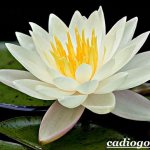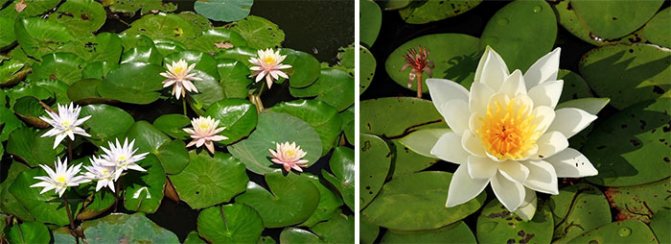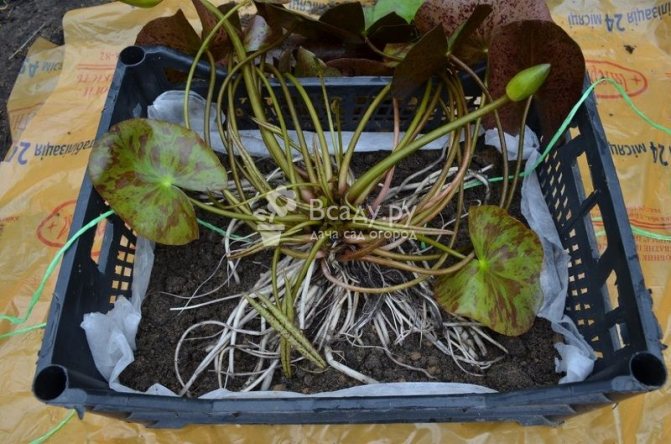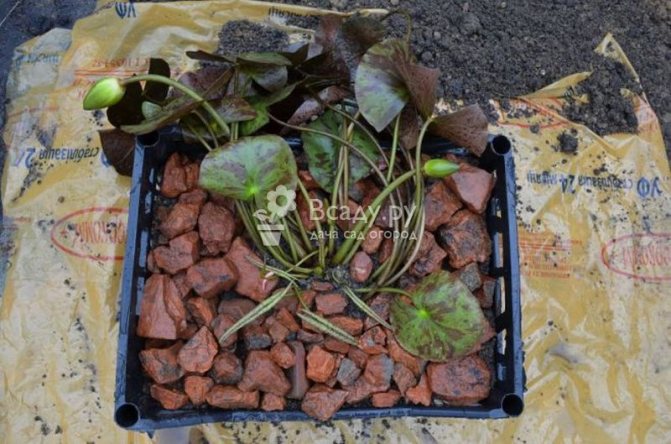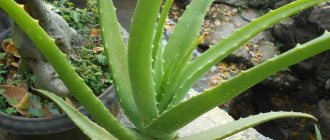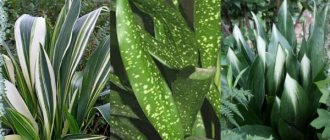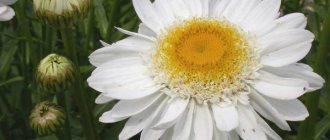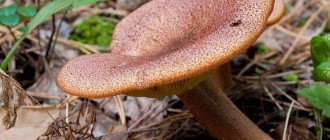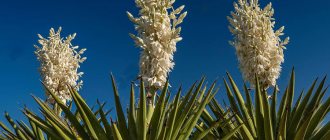A flower that is often confused with a lotus, and in Europe is called a water lily, without which it is impossible to imagine not a single pond in French castles and not a single quiet river backwater in the Russian hinterland, this is - white water lily.
External description
Of course, the most visible part is the flower. A water lily, depending on the variety, can have a diameter of 5 to 20 centimeters. It has almost no fragrance, and thin, elongated petals are found in white, yellow, pink and other colors. The core is deep yellow, consists of many stamens. Moreover, in some species the flower is located right on the water, while in others it rises on the stem by 10-20 centimeters.
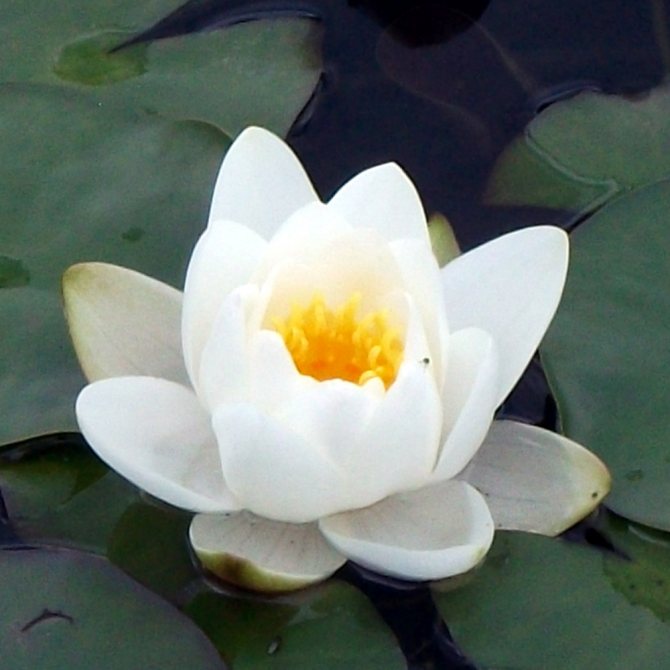
The leaves are deep green in color, rounded, with a deep notch on one side. The diameter ranges from 20 to 30 centimeters. However, they are green only outside. The inner side is red-violet.
The rhizome grows strictly horizontally, not going too deep into the soil of the reservoir, receiving all the substances necessary for development from the upper layers of the bottom. Usually highly branched.
Water lily tetrahedral: description and photo
It is a perennial aquatic flower with a thick long stem that lifts the buds above the water column. Water lilies belong to the Nymphaeaceae family. All of them have a powerful root system capable of fixing themselves in the bottom soil and staying there, despite the waves and currents that are sometimes observed in water bodies. The type of tetrahedral water lily belongs to the smallest representatives of the Family. They have heart-shaped oval leaves, painted in a pale greenish tone on the back side, and in saturated green on the upper side. Sometimes on the leaf blades, dark spots of irregular shape are noticeable, but this is not a characteristic feature of the species.
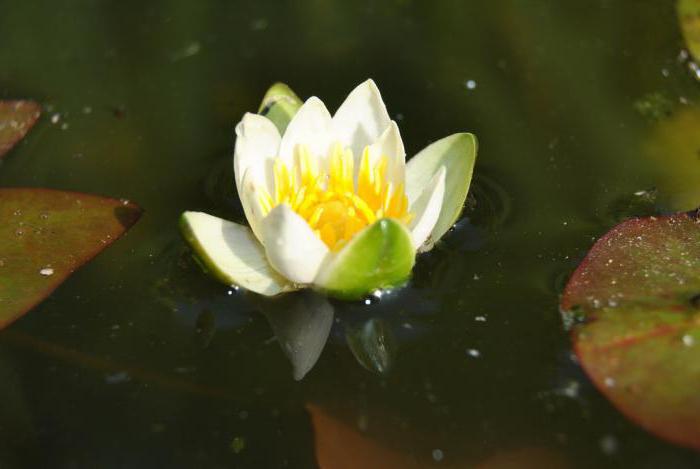

White, small in diameter (up to 50 mm), lily pads have 12 oval-oblong petals with slightly pointed edges. The base of the calyx is quadrangular. Leathery triangular-oval sepals, horizontally cut off at the base, form, together with the fruit, a quadrangular pyramid. The core of each flower is filled with numerous yellow stamens. The blooming tetrahedral water lilies look very gentle and elegant. The photo shows one of such cute flowers, as if in a mirror, reflected in the water surface of the reservoir. This plant reacts to sunlight by opening its buds towards noon and closing again in the evening. Water lilies bloom from June (in some regions from May) to frost. It is noteworthy that their graceful flowers have a pleasant aroma.
Habitat
Now let's figure out in which countries water lilies grow. The list is quite extensive. This unusual flower is found almost all over the world - from equatorial countries in the south to Scandinavia in the north.
In our country, a white water lily is most often found, a photo of which is given in the article. Less colorful and catchy than its southern relatives, it is still a real decoration of many reservoirs.
Where does the white water lily grow in Russia? It is spread practically throughout the entire territory of our country. It can be seen most often in the European part, but it also grows in Western Siberia, the North Caucasus, and the Urals, with the exception of the northernmost regions.The plant grows in rivers with weak currents, lakes and ponds. Rarely found in water bodies with a depth of more than two meters.
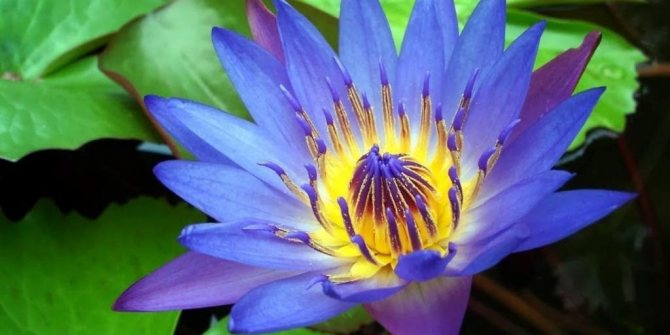

Many readers may be interested in where the white water lily grows outside of Russia. The list of countries is not too long - first of all, these are Ukraine, Armenia and Azerbaijan. In other countries, it practically does not occur in the wild.
Myths and legends
The beautiful nymphea is called the flower of the sun. The flower opens its petals with the appearance of the sun and closes them with the last rays.
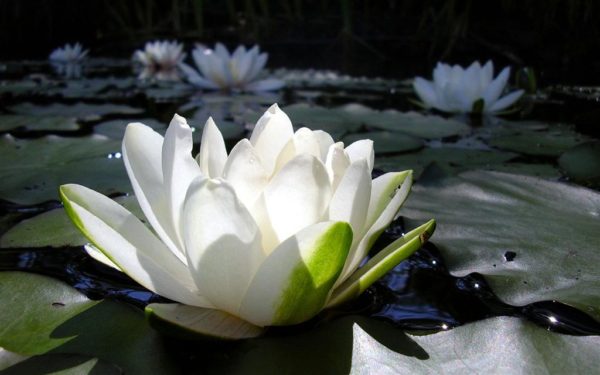

There are a lot of legends and myths about this flower. And they have been going for a long time.
The most widespread myth is that the white nymph fell in love with Hercules and without receiving reciprocal feelings rushed into the water and drowned, and in its place a beautiful snow-white flower grew, which to this day shows proof of true pure love for Hercules.
Chemical composition
Most people regard water lilies exclusively as a beautiful plant. But it contains substances that make it a rather valuable plant. Of course, the rhizome is of the greatest interest. Primarily due to the large amount of nutrients. The amount of starch in it ranges from 20 to 50 percent. In addition, there is up to 20 percent sugar and up to 10 percent protein.
True, the highest concentration is achieved in autumn, when the plant is preparing for wintering in order to survive until spring. When the water warms up enough, the rhizome sprouts new shoots, actively consuming the stored starch so that the leaves quickly rise to the surface and bloom, receiving enough sunlight.
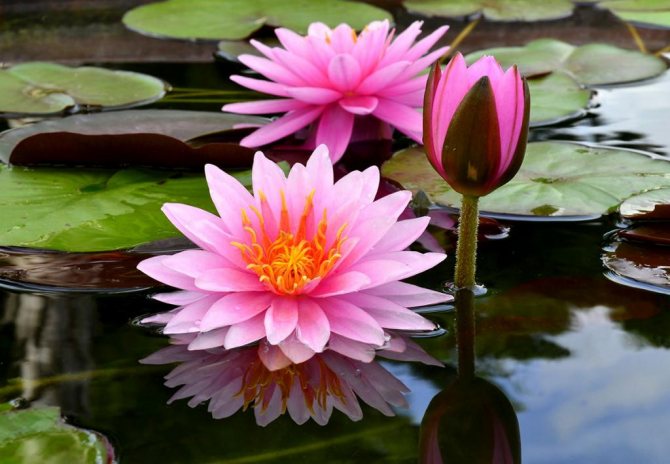

Also, the rhizome contains quite a lot of tannins, thanks to which it does not rot in water for a long time, easily surviving until spring.
Victoria amazon: giant water lily
The giant Victoria Amazonian water lily was discovered in 1832 during a trip by the German natural scientist Eduard Pöppig in the Amazon. It was his mention of the plant that is considered the first, the earlier ones were ignored.
It is called giant because of the extraordinary size of its emergent leaves and flowers.
It is considered one of the most beautiful representatives of the nymphaean genus. It is quite rare, most common in the Amazon Basin in Bolivia and Brazil.
Distinctive features of Victoria Amazonian:
- Huge round leaves, up to 50 cm in diameter.
- The cuttings are attached to the center of the leaf.
- The sheet is capable of supporting a weight of more than 30 kg.
- A sheet of bright green color has "bumpers" at the edges.
- On the reverse side, a sheet of bright burgundy color, covered with many small needles.
It blooms only once a year, in December-January. Duration of flowering is 2-3 days, the rest of the time the flower is immersed in water. It blooms exclusively at night, in the late evenings the buds emerge from the water and remain open until the morning.
Economic use
It would be strange if people did not appreciate the beneficial properties of rhizomes. In many countries where the water lily grows in swamps or lakes, locals use this valuable plant.
For example, it is often grown as a cultivated plant - a huge amount of rhizomes can be harvested from one hectare - in dried form up to 2 tons, which is a very good indicator. First of all, the rhizomes are used for food. They can be fried or boiled. By drying, you can easily grind the roots, turning them into high-quality and nutritious flour.
For many years they have been used for dyeing fabrics in brown and black colors. Finally, they serve as raw materials for the collection of Zdrenko - for a long time he was prescribed to patients with cancer.
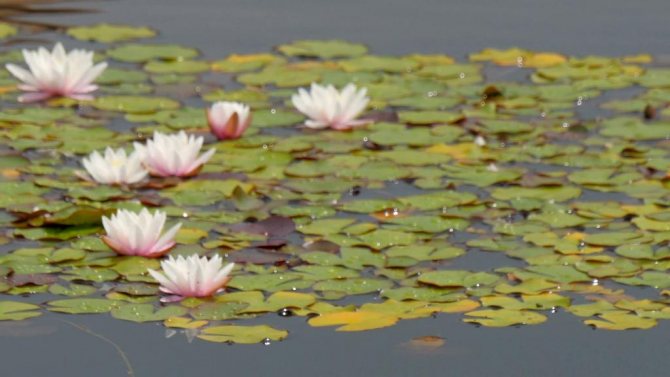

The seeds do not disappear either. Since they contain alkaloids and tannins, they are used by some peoples as a substitute for coffee.
Plant in floriculture
If you have a pond or lake on your own plot, you can plant a water lily there yourself. It will bloom regularly if the area of the reservoir allows for at least a square meter of space for each shoot. In this case, the surface of the water should be well lit.
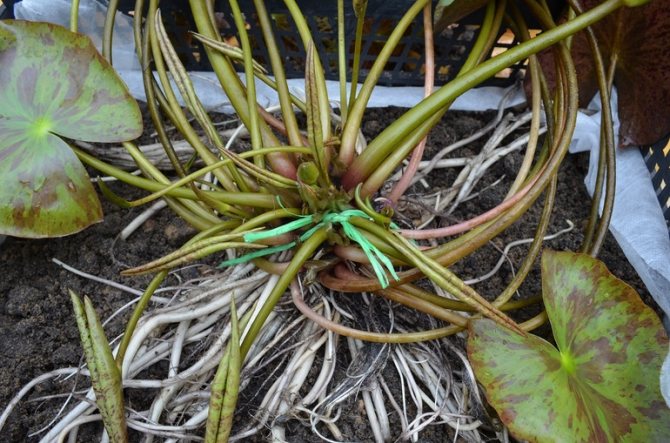

Planting is done in May or June. To do this, first prepare the soil from peat, river sand, compost and garden soil, and then attach the root to the bottom.
Plant care is carried out by removing dry leaves and wilted buds, as well as applying fertilizer. Bone meal is well suited for the latter. The balls formed from it and clay are buried next to the roots. Flowers also need to be protected from aphids, which may prevent the buds from opening, and snails that eat foliage.
Water lily can reproduce on its own - birds carry its seeds, as they mistake them for fish eggs. You can also cut off a piece of rhizome with a bud from the plant and plant it. Vegetative propagation will be safe for the water lily if you lubricate the cut with crushed charcoal.
How to grow a water lily
Many summer residents and owners of private houses, appreciating the sophistication and beauty of a water lily, eventually light up with the desire to grow it at home. Indeed, what can emphasize their taste better than a small pond decorated with these exquisite flowers? True, for this you need to know how water lilies grow in a pond - otherwise the idea is initially doomed to failure.
They can be planted at any warm season - from early May to late September. For this, it is best to use rhizomes - they are sold in some specialty stores, but they can also be carefully dug up in any forest body of water.
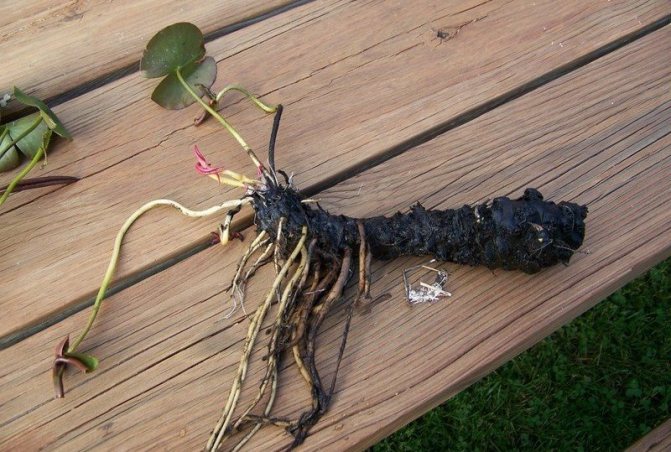

Planting depends on how deep the reservoir is, where you plan to grow it. If the depth is small - 30-70 centimeters, then it will probably freeze to the very bottom. In this case, it is best to plant the rhizome in a small plastic or metal container. It is filled with nutritious soil, and after planting, the soil is strengthened with large pebbles so that it is less washed out. After that, the container is gently lowered to the bottom.
If on your site there is a full-fledged pond with a depth of one and a half to two meters, fed by warm springs and not freezing even on the coldest winter days, then it would be better to plant the rhizome directly into the ground of the reservoir. If everything is done correctly, then in a few days the plant will strengthen and begin to actively grow until it reaches the surface of the reservoir.
The main thing is not to plant the plants too tightly - it is desirable that half of the area of the reservoir is free. If the planting is too dense, the water lilies will not bloom, and it is precisely admiring the flowers that is the main goal of the gardener.
Breeding at home
The tetrahedral water lily, the description of which is given above, feels great not only in natural, but also in artificial reservoirs. If all the conditions are created for her, she can become an original decoration in the landscape design of a personal plot. Note that the color of its petals can be not only white, but also pink, lilac, purple, lilac, beige and even blue. Thanks to the different colors of miniature buds, unusual compositions can be created.
Ground requirements:
- Enriched with organic matter.
- Heavy.
- Silted up.
- Necessarily with the addition of clay.
- Nutritious.
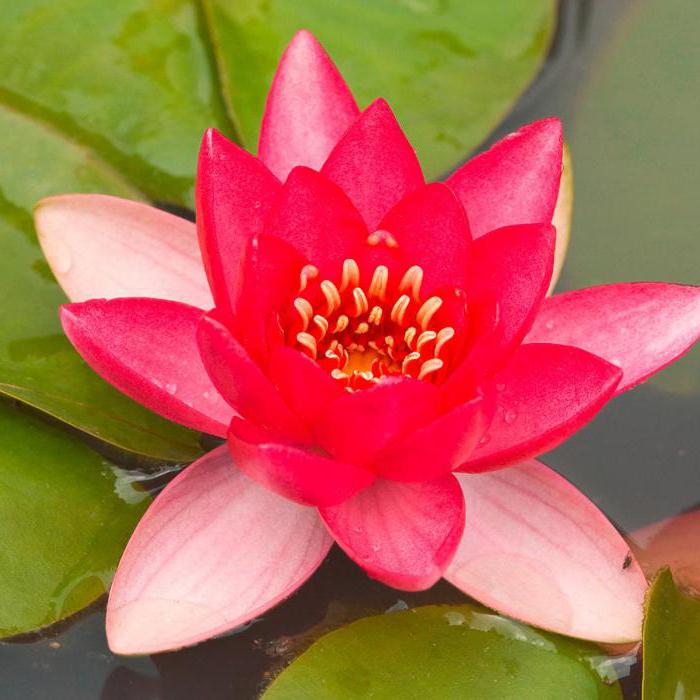

The soft water in which the flower will live must be slightly acidic. Growing a tetrahedral water lily cannot be called easy. This plant, endowing with beauty, requires increased attention to its person. It can be propagated by seeds, but the result will be good only in open water systems. At home, it is better to use the method of dividing the rhizome. Each fragment must have at least one growth bud.
It is required to plant a delenka immediately, since the rhizome is irreversibly damaged in the absence of moisture for a long time. It is advisable to first place a young plant in a container prepared in advance and filled with the necessary soil, but you can also immediately in a reservoir. So that the roots that have not yet been fixed do not float, they are carefully fixed with small pebbles or screenings. To what depth to plant a tetrahedral water lily depends on the size of the seedling. It can be as little as 30 cm or even 1 meter.
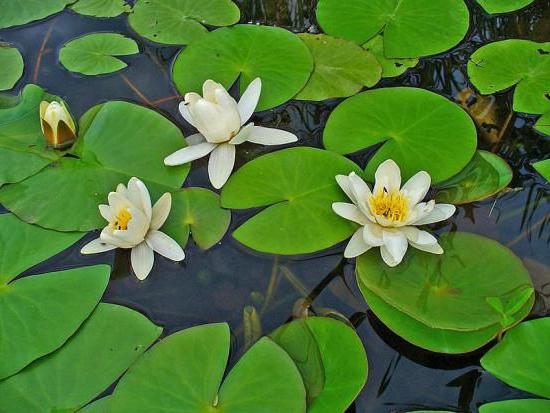

The container with the flower must be kept in the reservoir from the first day of planting. As the water lily grows, its "home" is immersed deeper and deeper. In regions with cold winters, it is wiser not to transplant it from the container to the bottom, since in the fall the plant will have to be placed again in some container and taken out to a cool room so that it does not die in a pond that freezes to the bottom. It is important to know that tetrahedral water lilies love light, but they will bloom in partial shade. But it is useless to wait in the dense shade of flowering. The second condition for successful cultivation is stagnant water. In extreme cases, small waves are allowed. But near fountains or other systems that create vibrations and rapid movement of water, they die.
Water lilies love feeding. A large amount of fertilizer is applied during the period of active growth. They "pamper" her with bone meal, which is combined with clay, roll balls from such a "dough" and place them near the roots.
Wintering water lilies
When planting rhizomes in the soil of a deep reservoir, you should not worry. By autumn, the upper part of the plant will die off in order to revive in spring and continue the life cycle.
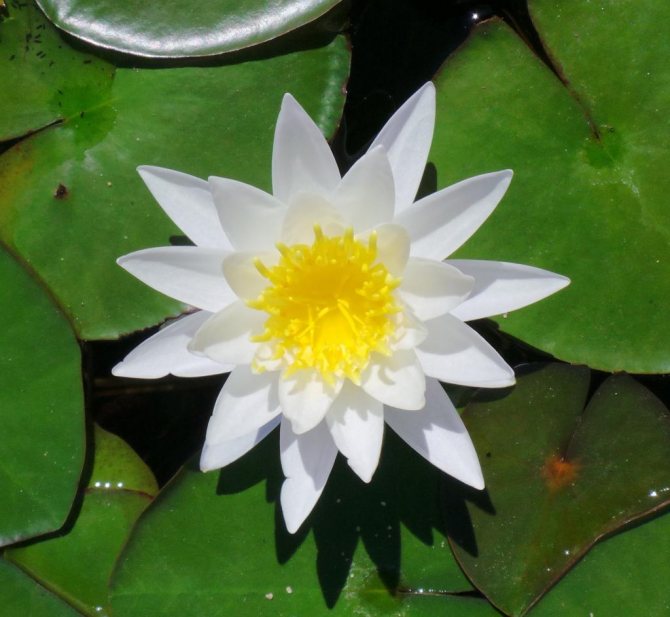

But if you have chosen a small body of water, which will probably freeze to the bottom, then you will have to make sure that the root does not die in winter. Fortunately, you have foreseen this - when most of the plant dies, you can safely pull the container out of the water along with the rhizome and take it to a cool place, for example, to a cellar or basement, where the temperature does not drop below zero, but at the same time does not rise so much to wake up the plant.
In the spring, when the water in the reservoir at the site warms up enough, you just need to lower the container to the bottom in order to admire the beautiful and sophisticated plant all summer long.
Planting and caring for water lilies


Snow white lily is a rare plantbut it is not difficult to grow it. Water lilies should be planted in calm, still water, away from fountains or strong currents of water, from mid-May to late June.
Planting is carried out directly into the ground in plastic containers - this will better secure the rhizome and protect it from washing out in the event of unforeseen violent flows of water.
Arrowhead plant
The substrate should be 2/3 heavy clay soil and 1/3 peat. White water lilies thrive in soft and acidic water at pH 5.5-7.0.
The flowers of the plant love the sunand only a few species thrive in a partially shaded pond.
Once every 3-4 years, when the leaves begin to grow above the surface of the water, and the flowers become smaller and wither quickly, the rhizome should be dug in the spring and divided into several parts, then planted again.
It is advisable to fertilize the plants annually. Fertilizers containing nitrogen should be used. Fertilizers for water lilies should in no way contain phosphorus - this leads to the development of algae, which are undesirable for the inhabitants of a pond or stream.
In spring (until mid-June), snow-white flowers can be fertilized with horny flour, it contains about 15% nitrogen and does not dissolve in water, only decomposes by microorganisms in the root zone of the plant. You need about 50 g of fertilizer. In winter, if the pond freezes to the bottom, it is necessary to dig the water lilies and store in water in a room protected from low temperatures.
Types of water lilies
Of course, it is simply impossible to list all the types of water lilies existing in the world, for this it would be necessary to write a multivolume encyclopedia.There are more than three dozen species in the wild. And the number of artificially bred varieties is even measured in hundreds. But it is quite possible to mention several varieties:
- Above, a white water lily has already been described - it is also Nymphaea alba.
- Of no less interest is the snow-white water lily - Nymphaea Candida. It has larger petals, although their number is slightly less, which is why it looks not so elegant and sophisticated.
- Dwarf water lily -Nymphaea pygmaea. It is the smallest of its kind. Its flowers rarely reach a diameter of 2.5 centimeters! But they are quite beautiful - they have a rich red color. Prefers shallow depth - usually less than half a meter.
- Nymphaea tuberosa, also known as tuberous water lily, grows up to one meter deep. The flowers are rather large, with wide, pure white petals. The leaves are not dark green, like in most species, but light, which looks very elegant in combination with a snow-white flower.
- But the fragrant water lily, she is Nymphaea odorata, a guest from North America. One of the few representatives of the species, which has a rich, pronounced aroma. The flowers are large - up to 15 centimeters. The petals are numerous, with sharp tips. He also prefers not too deep - 50-80 centimeters.
Features of the stem of a white water lily
The stem of the water lily is round in cross section, elastic and flexible under water. Firmly held at the base by the rhizome. The stem grows up to 2 m. At the end it is crowned with a calyx with a flower.
Features of the stem of the white water lily:
- Always straight, very flexible and elastic.
- It grows in length up to 2 m.
- The color of the stem can vary from burgundy green to bright green.
- Firmly adheres to the rhizome.
- Does not release leaves, the leaves of the water lily have their stems-cuttings.
- Does not release shoots.
- When exposed to air, it hardens and becomes covered with bark.
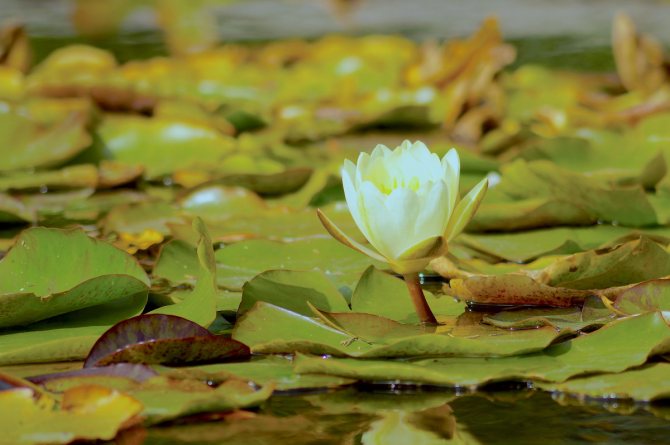

The flowering of this fabulous plant is like a miracle. Flowers can change color. Dissolving, they have a pure white color, on the 2nd day the flower opens already in a pale pink color, and on the 3rd day the Amazonian Victoria acquires a crimson color.
Water lily in mythology
Many peoples who are well acquainted with this amazing plant have many legends associated with water lilies. The Latin name - Nymphaea - the plant got from a water nymph. The beautiful girl fell in love with Hercules and suffered from love for him. When he said that he did not reciprocate, the unfortunate nymph could no longer remain herself, and the gods mercifully turned her into a beautiful flower that pleases everyone who sees him.
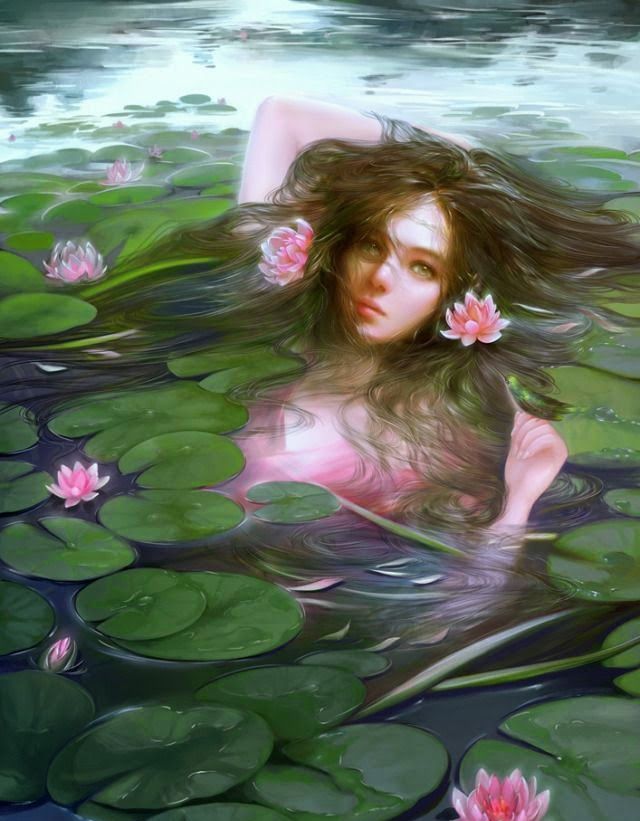

In our country, as in most Slavic ones, water lilies are directly related to mermaids (not to be confused with sea maidens with tails). It is these flowers that drowned girls prefer to use to decorate their hair.
Legends about water lilies are also told in Scandinavia. Many people here believe that each flower has its own companion - a tiny elf. It is born when the water lily blooms for the first time. Throughout the short Scandinavian summer, the tiny man lives in a flower that blooms at sunset and closes when the sun sets over the horizon. Well, with the advent of cold weather, the flower dies, the elf, alas, also dies in order to be reborn in the spring.
Conservation status
Information about the water lily is included in the Red Book, since massive pollution and drying up of water bodies leads to a decrease in the number of the species. Practical measures aimed at plant protection include environmental engineering measures to protect nature. But pollution can be fought at the household level as well. Each person is able to make his contribution, it is enough to start with a rational economy, for example:
- use detergents with environmentally friendly components;
- properly dispose of waste, in particular, do not flush paint, cleaners and solvents down the drain;
- use water sparingly;
- limit the use of plastic.


Even a child should know these simple rules. The more people follow them, the more extensively the ecological situation can be changed.
Medicinal properties.
Nymphea water lily, water lily, swimsuit, water lumbago - the queen of a quiet backwater, famous overcome the grass, able to heal and overcome any obstacles.
Unfortunately, recently the use of this plant in traditional methods of medicine is not very active, although the composition is suitable for use in a number of diseases .. It can be used for neuroses and insomnia as a sedative, for rheumatism and neuralgia as a pain reliever, for fevers as an antipyretic.
Water lily leaves are used as an external anti-inflammatory agent, roots and rhizomes can help with inflammatory skin processes. For colds, the root of the plant can be used instead of mustard plasters. The water lily is more widely used in traditional methods of treatment. Tincture of the root, since the time of Avicenna, has been used for various tumors of the spleen, including malignant tumors.
The rhizome of this medicinal plant contains starch, proteins, sugars, essential oil, and the alkaloid nymphein. Flowers, stems and rhizomes also contain essential oil, but in much smaller sizes. The glycoside nymphaline, obtained from flowers, can have a psychoactive effect, that is, affect the human nervous system.
The amazing properties of this plant have found application in folk medicine. It was used as a sedative for myalgia, neuralgia and hyperfunction of the glands of the reproductive system. Water lily is an excellent helper against acne and freckles, as well as a good laxative and antipyretic. This wonderful herb can help combat insomnia and fight jaundice.

